In September 2023, Chief Minister Arvind Kejriwal stated that inflation in Delhi was at its lowest point. He attributed this achievement to the successful implementation of various State government schemes aimed at providing essential services such as education, healthcare, electricity, and water which provided relief to the residents of the national capital. The ruling NDA leadership too has been drawing attention to what it termed as the successful handling of the economic situation in the country. However, the impact of inflation remains a pressing concern, particularly for marginalised population residing in the slums of Delhi.
A study conducted by Lokniti-CSDS in the first week of March, among 1,024 respondents sheds light on the pressing concern of inflation. Its impact on marginalised communities residing in Delhi’s slums is strikingly evident.
Examining the occupational demographics of the urban poor, the study revealed that close to three fourths of those surveyed were employed. Less than half the employed were engaged in some kind of a job, around one thirds of the employed were running small businesses and the others employed were involved in some part time jobs and work not clearly specified. Close to two of every ten slum dwellers identified themselves as homemakers, and another one of every ten were students or those seeking employment opportunities.
Nearly half of women in the slums (45%) were shouldering the financial responsibility for their families.
Rising prices but stagnant incomes
Despite the majority being employed, the issue of price rise was a major concern for Delhi’s urban poor. When asked about the perceived increase in inflation over the last two years, nearly nine out of every ten respondents expressed that it has increased significantly (Table 1). Additionally, close to one of every ten acknowledged a slight increase, while the remaining stated that there has not been much or any increase at all. This clearly underscores their concerns with the price rise in the capital city.
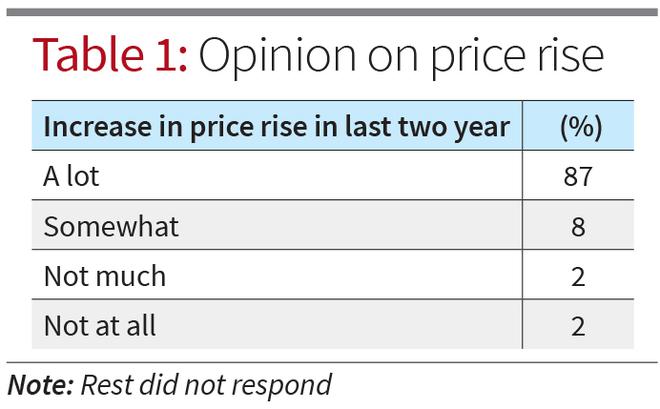
Upon examining individual commodities, it becomes evident that prices have risen across the board. However, a staggering three-fourths of the urban poor noted a substantial increase in household essentials such as LP gas, electricity, and food items (Table 2). Six in ten reported a significant rise in healthcare and house rent costs. Over half reported a significant increase in education expenses and public transportation fares. Overall, there is a widespread perception of price hikes across various essentials among the urban poor in Delhi.
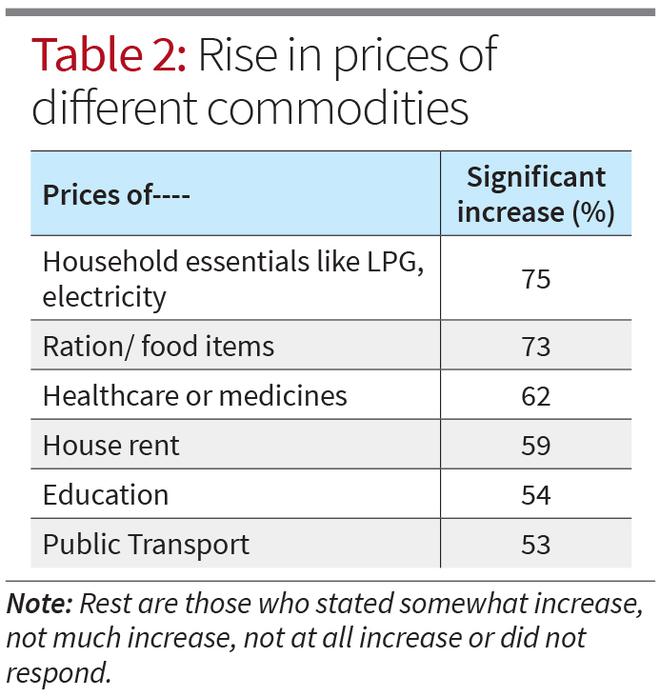
Shifting the focus to the financial status of the household, a staggering 84 percent of the urban poor stated that their household income falls short of meeting their needs, resulting in various difficulties. Among this group, six in ten indicated facing significant hardships, while three in ten acknowledged encountering some difficulty (Table 3).
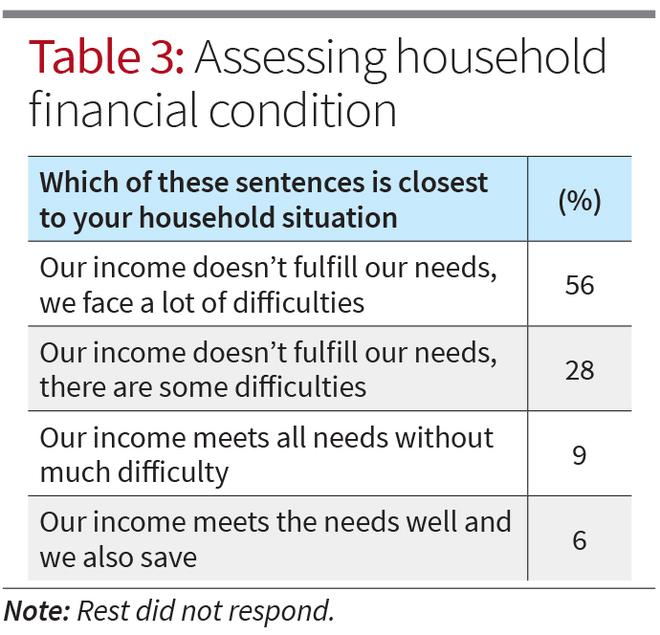
Merely six percent reported that their income adequately covers their family’s needs and allows for savings, while nine percent stated that their income fulfils all their needs without much difficulty, although they are unable to save.
Additionally, nearly half of the urban poor indicated that there has been no discernible improvement in their lifestyle over the past two years (Table 4).
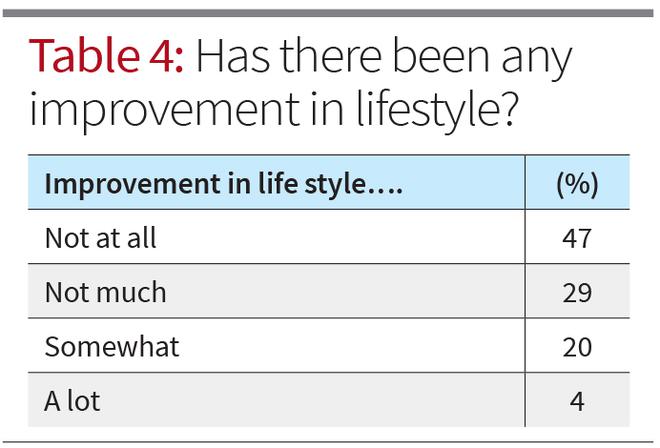
One in every ten respondents reported minimal improvement, while two in ten noted some positive changes. Only four percent expressed experiencing significant improvement.
When analysing the disparity between income growth and expenses, respondents were asked about the extent to which their household income increased in comparison to their expenses. Over half the respondents indicated that there has been no increase at all and three in ten reported not much increase in their income.
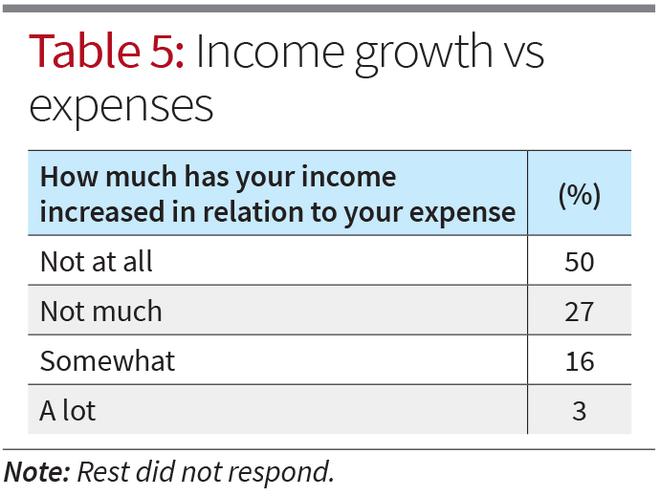
Merely three percent reported a substantial increase, while one sixth noted a somewhat increase (Table 5). This emphasises a significant mismatch between income growth and the expenses of the urban poor.
Who is responsible for the price rise?
When asked about the responsible party for the rising prices, over four in ten placed the blame on the Modi-led Central government, while a quarter held Mr. Kejriwal’s State government responsible (Table 6). Eight percent held the people themselves accountable, and seven percent felt that nobody should be blamed as inflation is a widespread phenomenon.
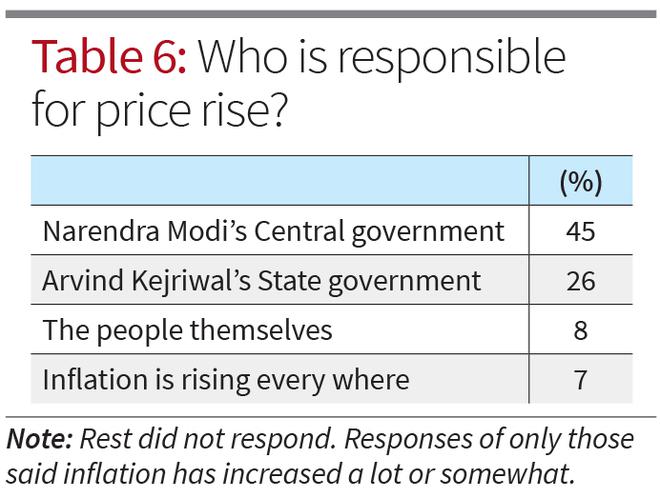
Is price rise a decisive voting concern?
It is evident that price rise poses a challenge for Delhi’s urban poor, with the majority struggling to meet their basic needs. But then, does this issue also translate into a voting concern for these individuals?
When asked about various issues individually, price rise and unemployment emerge as concerns for the 2024 Lok Sabha elections, followed by corruption. An overwhelming eight of every ten respondents cited price rise and unemployment as very important issues, while six in ten mentioned the issue of corruption.
Four in ten individuals emphasised both the construction of the Ram Mandir and government schemes as significant issues, while three in ten stated that religious identity will play a crucial role in their voting decisions during the upcoming elections.
When asked to identify the single most important issue amongst all while voting in the 2024 Lok Sabha elections, although the issue of price rise emerges as the most prominent concern, the proportion of those citing it drops to 35 percent (Table 7). This is followed by unemployment, mentioned by 18% of respondents.
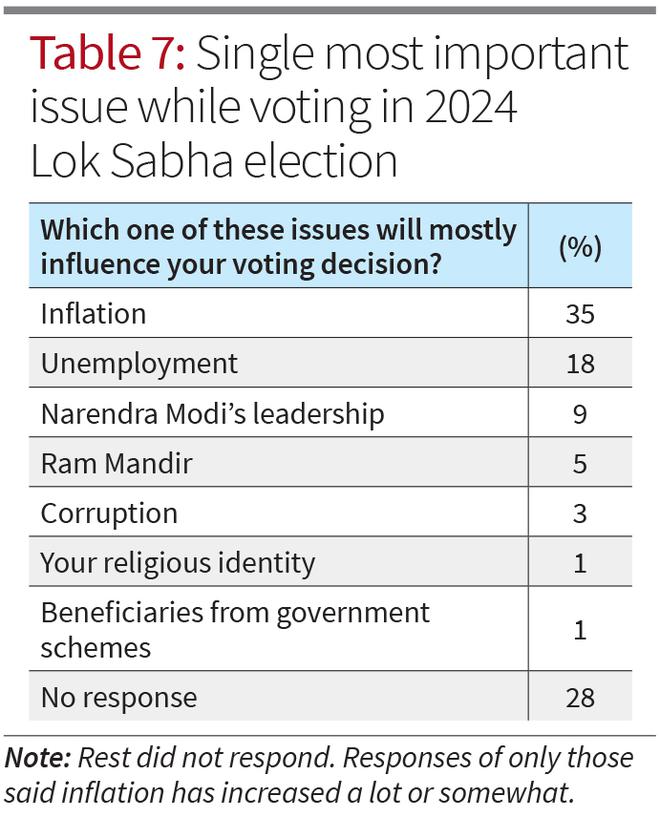
Narendra Modi’s leadership is identified as a factor by 9% of the urban poor, while the issue of the Ram Mandir is mentioned by 5%. Other issues received responses from less than 5% of the urban poor. Nearly three in ten respondents did not provide a response to the question.
Even among those who acknowledged a significant price rise over the last two years, only four of every ten consider it a crucial voting issue. It is intriguing that despite 87 percent of the urban poor acknowledging an increase in price rise over the last two years, only one in three perceive it as a crucial voting issue.
This discrepancy highlights a notable gap between the issues that affect people’s daily lives and those that ultimately influence their voting decisions.
(A study by the Lokniti-CSDS research team which includes Vibha Attri, Sanjay Kumar, Sandeep Shastri and Suhas Palshikar)






